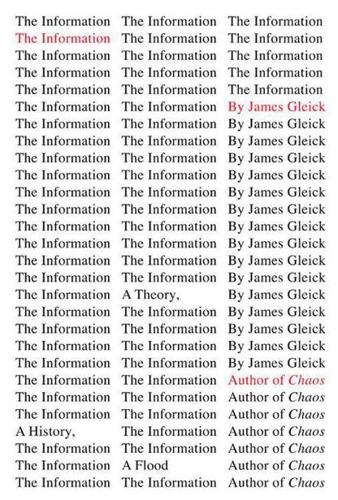
The Information: A History, a Theory, a Flood
by
James Gleick
Published 1 Mar 2011
In the long run, history is the story of information becoming aware of itself. Some information technologies were appreciated in their own time, but others were not. One that was sorely misunderstood was the African talking drum. * * * ♦ And added drily: “In this role, electronic man is no less a nomad than his Paleolithic ancestors.” 1 | DRUMS THAT TALK (When a Code Is Not a Code) Across the Dark Continent sound the never-silent drums: the base of all the music, the focus of every dance; the talking drums, the wireless of the unmapped jungle. —Irma Wassall (1943)♦ NO ONE SPOKE SIMPLY ON THE DRUMS. Drummers would not say, “Come back home,” but rather, Make your feet come back the way they went, make your legs come back the way they went, plant your feet and your legs below, in the village which belongs to us.♦ They could not just say “corpse” but would elaborate: “which lies on its back on clods of earth.”
…
.♦ He regretted it. He had made the talking drums a part of his own life. In 1954 a visitor from the United States found him running a mission school in the Congolese outpost of Yalemba.♦ Carrington still walked daily in the jungle, and when it was time for lunch his wife would summon him with a fast tattoo. She drummed: “White man spirit in forest come come to house of shingles high up above of white man spirit in forest. Woman with yams awaits. Come come.” Before long, there were people for whom the path of communications technology had leapt directly from the talking drum to the mobile phone, skipping over the intermediate stages
…
J., 5.1, 5.2 Smolin, John social sciences, 8.1, 8.2, 8.3 Solomonoff, Ray, 12.1, 12.2, 12.3, 12.4 Sömmerring, Samuel Thomas von Sophocles, 14.1, 15.1 Southwell, Robert Soviet Union, 12.1, 12.2, 12.3 space exploration Speculum Maius (Vincent of Beauvais) spelling, 3.1, 3.2, 3.3, 3.4 Spender, Stephen Sperry, Roger “spooky action at a distance,” (Einstein), 13.1, 13.2 Sprat, Thomas, 2.1, 3.1 statistical analysis, 7.1, 7.2, 7.3, 7.4, 9.1, 9.2, 12.1 steam power, 4.1, 4.2, 4.3, 9.1, 9.2 Stent, Gunther, 10.1, 10.2, 10.3 Stevin, Simon stochastic processes, 7.1, 7.2 Stoppard, Tom, 9.1, 9.2, 14.1 storage of information Shannon’s early calculations on, 7.1, 7.2 sources of confusion in, 14.1, 14.2 trends in, 14.1, 14.2 Streufert, Siegfried, 15.1, 15.2 Strogatz, Steven, epl.1, epl.2 Stuart, Gilbert Suetonius superposition of states, 13.1, 13.2 Surowiecki, James surprise, as feature of information, 7.1, 9.1 Susskind, Leonard syllabary symbolic logic application to genetics, 6.1, 6.2, 6.3 to avoid paradox conceptual basis, 5.1, 5.2, 5.3 conceptual origins of computers in, 6.1, 6.2 to describe communication systems to describe relay circuits, prl.1, 6.1, 6.2 goals of Principia Mathematica, 6.1, 6.2, 6.3 incompleteness of formal systems of, 6.1, 6.2, 6.3, 6.4, 7.1 as mechanical operation, 6.1, 6.2, 7.1, 7.2 promise of, 6.1, 6.2 search for perfect system of symbols and symbol sets in Babbage’s mechanical notation, 4.1, 4.2, 5.1, 6.1 for cryptography fo universal language in Lovelace’s game solution formula for measurement of information, 6.1, 6.2, 6.3 for perfect language redundancy of communication determined by, 1.1, 1.2 in structure of language for Turing machine see also alphabet(s); code; symbolic logic; writing Szilárd, Leó, 9.1, 9.2, 9.3, 9.4, 13.1 “Table Alphabeticall, A” (Cawdrey), 3.1, 3.2, 3.3, 3.4, 3.5, 3.6, 3.7, 3.8, 3.9, 3.10, 3.11, 3.12, 3.13, 3.14, 3.15, 3.16, 3.17, 3.18, 3.19 Table of Constants of the Class Mammalia (Babbage) Table of the Relative Frequency of the Causes of Breaking of Plate Glass Windows (Babbage) Table of Triangular Numbers, (Babbage) Tables for the Improvement of Navigation (Briggs) Table to find the Height of the Pole (Briggs) Tafelen van Interest (Stevin) Talbot, William Fox talking drums, 1.1, 1.2, 1.3, 1.4, 1.5, 1.6, 1.7, 1.8, 1.9, 1.10, 1.11, 1.12 Talking Drums of Africa, The (Carrington) Tawell, John Teilhard de Chardin, Pierre telegraphy, prl.1, 1.1, 4.1 address codes, 14.1, 14.2 Baudot code for bubble cipher and compression systems for, 5.1, 5.2, 5.3, 5.4, 5.5, 5.6 as commercial business, 5.1, 5.2 commercial interest in, 5.1, 5.2 conceptual understanding of, 5.1, 5.2 early systems for, 5.1, 5.2, 5.3, 5.4, 5.5, 5.6, 5.7, 5.8, 5.9, 5.10, 5.11, 5.12 electrical relays in before electricity, 5.1, 5.2, 5.3, 5.4 in England, 5.1, 5.2, 5.3 errors in in France, 5.1, 5.2, 5.3, 5.4, 5.5, 5.6, 5.7, 5.8 growth of, 5.1, 5.2, 5.3, 5.4, 5.5, 5.6, 5.7, 5.8, 5.9 infrastructure of invention of, 5.1, 5.2, 5.3, 5.4 as medium, 5.1, 5.2 operator’s key perception of time and, 5.1, 5.2 preservation of messages sent by, 5.1, 5.2 private ciphers to reduce cost of, 5.1, 5.2 public interest in codes and, 5.1, 5.2 in Soviet Union statistical structure of language in, 7.1, 7.2 telephony and, 6.1, 6.2, 6.3 trans-Atlantic, 5.1, 5.2 waveform analysis in weather reporting and, 5.1, 5.2 see also Morse code telephony architecture and barbed-wire networks biological metaphors for commercial applications of, 6.1, 6.2 concern about social effects of demand for information and, 15.1, 15.2 electrical engineering requirements of, 6.1, 6.2 evolution of switching technology for, 6.1, 6.2, 6.3, 6.4 farmer cooperative networks of growth of, 6.1, 6.2, 6.3 measurement of information carried by, prl.1, 6.1, 6.2, 6.3, 6.4, 6.5 printed directories, 6.1, 6.2 relays in signal distortion in, prl.1, prl.2 in Soviet Union telephotography, 6.1, 6.2 teleportation, 13.1, 13.2, 13.3, 13.4 television, prl.1, prl.2, 7.1, 11.1, 11.2 Teller, Edward Tennyson, Alfred, Lord, 4.1, 4.2 Terhal, Barbara Théorie des fonctions analytiques (Lagrange) Theory of Heat (Maxwell) thermodynamics of computation, 13.1, 13.2, 13.3, 13.4 concept of entropy in, 9.1, 9.2, 9.3 conceptual evolution of, 9.1, 9.2 first law of of life molecular fluctuations in, 9.1, 9.2 probability in, 9.1, 9.2, 9.3, 9.4 second law of, 8.1, 9.1, 9.2, 9.3, 9.4, 9.5, 9.6 Thesaurus (Roget) thinking cryptographic skills as digital operation, 8.1, 8.2 discovery of human–computer comparison, 8.1, 8.2 language and, 2.1, 2.2 in literate cultures, 2.1, 2.2, 2.3, 2.4, 2.5, 2.6, 2.7, 2.8 logic and, 2.1, 2.2, 5.1, 5.2 machine and computer operations as, 6.1, 7.1, 7.2, 8.1, 8.2, 8.3, 8.4, 8.5, 8.6, 8.7, 8.8, 8.9, 8.10 “recoding” of information in, 8.1, 8.2 telegraph effects on, 5.1, 5.2, 5.3, 5.4 see also logic Thomas, Thomas Thomson, James Thomson, William, Lord Kelvin, 9.1, 9.2, 9.3 “Three Approaches to the Definition of the Concept ‘Amount of Information’” (Kolmogorov) Three Letter Code for Condensed Telegraphic and Inscrutably Secret Messages and Correspondence (Scott) “Three Models for the Description of Language” (Chomsky) THROBAC time effects of information technology in perception of movement toward entropy in, 9.1, 9.2 in physics of black holes speed of early mechanical calculators, 4.1, 4.2 standardization of clocks, 1.1, 5.1, 5.2, 5.3, 5.4 telegraph effects on understanding of, 5.1, 5.2 written language and Time Machine, The (Wells) Tobias, Andrew tonality, in communication, 1.1, 1.2, 1.3 Torres y Quevedo, Leonardo Total Baseball: The Ultimate Baseball Encyclopedia, 13.1 trademark names, 14.1, 14.2, 14.3 transistor, prl.1, prl.2, prl.3, 3.1, 7.1, 14.1 translation, language, 3.1, 3.2 transmission of information Babbage’s work on, 4.1, 4.2 bandwidth requirements, 6.1, 6.2 in biological evolution, 10.1, 10.2 in cuneiform, 2.1, 2.2 data compression for disruptive effects of new technologies for, prl.1, prl.2 entanglement as evolution of electrical technologies for, 5.1, 5.2 genetic, 10.1, 10.2 historical evolution, 1.1, 1.2, 1.3, 1.4 human history and, prl.1, prl.2 in telephotography, 6.1, 6.2 interconnectedness of cyberspace for, 3.1, 3.2 limits of speed and capacity, 7.1, 8.1, 8.2 news reports, 5.1, 5.2 overload effects, 15.1, 15.2, 15.3, 15.4, 15.5 by quantum teleportation, 13.1, 13.2 for replication of culture sensory involvement as indicator of quality of, 2.1, 2.2 source of noise in transmission of electricity as, 5.1, 5.2 units of measurement see also communication; meme(s); specific mode of transmission Treatise on Electro-Magnetism (Roget) tree rings triangular numbers, 4.1, 4.2, 4.3, 4.4 Trudeau, Garry truth, 2.1, 5.1, 6.1, 6.2, 6.3, 6.4, 6.5 Turing, Alan, prl.1, 7.1, 7.2, 7.3, 7.4, 7.5, 7.6, 8.1, 8.2, 8.3, 8.4, 8.5, 9.1, 14.1 Turing machine(s) capabilities as code generator proof of incompleteness theorem by, 7.1, 7.2, 7.3, 7.4, 12.1 significance of, in computer science, 12.1, 12.2 states symbols tape, 7.1, 7.2 thermodynamics of, 13.1, 13.2 two-state model U machine, 7.1, 7.2, 7.3, 12.1 Turing Test, 8.1, 8.2, 8.3, 8.4 Twitter, 11.1, epl.1, epl.2 Uglow, Jenny uncertainty entropy as measure of, 7.1, 9.1, 9.2 incompleteness theorem and, 7.1, 12.1 information and limits to science, 12.1, 12.2 in measurement of quantum properties, 13.1, 13.2, 13.3 uncomputability, 7.1, 7.2, 7.3, 7.4, 7.5, 12.1, 12.2, 12.3, 12.4, 12.5 undecidability; see decision problem uninteresting numbers, 12.1, 12.2 University of Vienna Updike, John Uruk, 2.1, 2.2, 2.3 Vail, Alfred, 1.1, 5.1, 5.2, 5.3, 5.4, 5.5, 5.6, 5.7, 7.1 Vail, Theodore N., 6.1, 6.2 VanArsdale, Daniel W.

Wonderland: How Play Made the Modern World
by
Steven Johnson
Published 15 Nov 2016
The very first long-distance wireless networks were the “talking drums” of West Africa, percussive instruments that were tuned to mimic the pitch contours of African languages. Complex messages warning of impending invasions, or sharing news and gossip about deaths or marriage ceremonies, could be conveyed at close to the speed of sound across dozens of miles, through relays of drummers situated in each village. Instruments designed originally to set the cadence for dance and other musical rituals turned out to be surprisingly useful for encoding information as well. The origins of the talking drum technology are lost to history; there is no Samuel Morse to celebrate, some ingenious inventor of the original code.
…
Babbage figured out how to swap algorithms in and out of random access memory before the rest of us figured out how to strike a few keys with our fingers and make letters appear on a page. “From a mechanical point of view”: Michael H. Adler, The Writing Machine (London: Allen and Unwin, 1973), 5. The very first long-distance: For more on the talking drums, see James Gleick, The Information: A History, a Theory, a Flood (New York: Vintage, 2012). “The Ballet began”: Richard Rhodes, Hedy’s Folly: The Life and Breakthrough Inventions of Hedy Lamarr, the Most Beautiful Woman in the World (New York: Doubleday, 2011), 68. “outsacked the Sacre”: Paul Lehrman, “Blast from the Past,” Wired, November 1, 1999, http://www.wired.com/1999/11/ballet.
…
See also animation as an improvement over magic lantern shows, 170–71 Carthay Circle Theatre premiere of Snow White, 181 close-up shot, 171 Walt Disney, 177–81 Her (film), 184 multiplane camera to show visual depth, 179–81, 180 origin of storyboards, 178 Snow White (film), 176, 177–81, 184 Steamboat Willie (film), 176, 177 city planning Fort Worth, 54 population shifts from urban centers to the suburbs, 54–55 Victor Gruen’s vision, 53–55, 58–59 Walt Disney’s vision for EPCOT, 55–62, 59–60, 274 Civilization and Capitalism (Braudel), 39–40 Civil War, 34 class differences broken down by the emerging fashion industry, 38–40 distribution of wealth as shown in the Landlord’s Game, 196–98 exhibitions as great levelers, 157 public spaces as an equalizer, 246, 258–59 as shown in the game of chess, 188–90 Claude glass, 265, 265–66 clocks as the basis for automata, 6 cloves, 111–13, 122–25, 140 codes cycle of encoding and decoding, 92 “talking drums” of West Africa, 91 telegraph, 91 Coen, Jan Pieterszoon, 119 coffee. See also coffeehouses caffeine, 246–48 taste of, 248 utilitarian purposes of, 248 “Vertue of the COFFEE Drink” (essay), 249–50 Waghorn’s, 252 Woman’s Petition Against Coffee, 250–51 coffeehouses, 251, 253 Bedford, 252–54 differences among, 252–54 eclectic decor of Don Saltero’s, 255–57 intellectual networking, 254–55, 259 John Hogarth’s, 252 Lloyd’s, 254 London, 254 as a news source for journalists, 254 as places of productivity and innovation, 258–59 “Proclamation for the Suppression of Coffee Houses,” 251–52 Rawthmell’s, 259 Starbucks, 274 “Turk’s Head, The,” 249 cognitive science and chess, 193–94 chunking, 193 color chintz and calico, 27, 27 cotton, dyed, 26–27 as enhanced by a Claude glass, 265, 265–66 trends of the mid-1700s, 37 Tyrian purple, 18–21 Columbus, Christopher, 114–15, 211–14, 212 commodity fetishism, 153–54 Common Sense (Paine), 241 Compleat English Tradesman, The (Defoe), 24 computer technology.
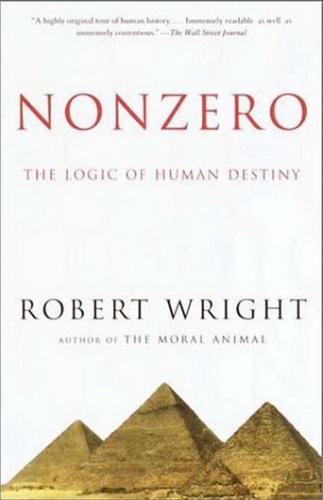
The Moral Animal: Evolutionary Psychology and Everyday Life
by
Robert Wright
Published 1 Jan 1994
Runners were stationed one to five miles apart (the flatter the stretch, the longer the gap), and might hand off either quipus or oral messages, ritually repeated during the handoff to suppress error. Data could travel 150 miles a day. But that’s nothing compared to the Ashanti, who sent data hundreds of miles in a few minutes with a network of “talking drums” that could summon political leaders, warn of danger, mobilize the military, announce deaths, or (on a less urgent note) broadcast proverbs. Differences in tone had meaning, as in the Ashanti language itself. This book has made little use of such familiar phrases as the “Stone Age” and the “Bronze Age.”
…
.† It isn’t just economic power that information technology confers. Concerted political organization—to resist oppression, to lobby for lower taxes, whatever—is a form of non-zero-sum interaction among people who share an interest. As such, it calls for communication. African slaves in America would later demonstrate this fact by organizing slave revolts via talking drum. And writing, of course, would come to play a role in revolt as well. (During the U.S. Civil War, most southern states made it illegal to teach slaves to read and write.) But in the ancient states, with literacy rare, we find only glimmers of its future subversive use. A piece of graffiti from Egypt in the third millennium B.C. reads: “You arrested me and beat my father. . . .
…
In fact, the word for the partly evolved script found in Easter Island—rongorongo—seems to be derived from the word for memory expert. See Kirch (1989), p. 273. Incan roads: See Adams (1997), p. 123. Incan error suppression: Adams (1997), p. 124. rate of Incan data travel: Encyclopaedia Britannica (1989), vol. 6, p. 277. “talking drums”: Service (1978), pp. 356–57. Bronze Age: Bronze was also in use among pre-urban peoples in Thailand and the Balkans. In general, archaeologists put less stock in the “Bronze Age” and “Stone Age” designations than they used to. Wool and trade: Goody (1986), pp. 69–71. thirty-five jars of beer: Nissen, Damerow, and Englund (1993), p. 46.
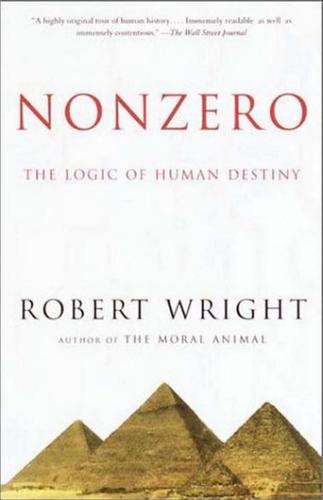
Nonzero: The Logic of Human Destiny
by
Robert Wright
Published 28 Dec 2010
Runners were stationed one to five miles apart (the flatter the stretch, the longer the gap), and might hand off either quipus or oral messages, ritually repeated during the handoff to suppress error. Data could travel 150 miles a day. But that’s nothing compared to the Ashanti, who sent data hundreds of miles in a few minutes with a network of “talking drums” that could summon political leaders, warn of danger, mobilize the military, announce deaths, or (on a less urgent note) broadcast proverbs. Differences in tone had meaning, as in the Ashanti language itself. This book has made little use of such familiar phrases as the “Stone Age” and the “Bronze Age.”
…
.† It isn’t just economic power that information technology confers. Concerted political organization—to resist oppression, to lobby for lower taxes, whatever—is a form of non-zero-sum interaction among people who share an interest. As such, it calls for communication. African slaves in America would later demonstrate this fact by organizing slave revolts via talking drum. And writing, of course, would come to play a role in revolt as well. (During the U.S. Civil War, most southern states made it illegal to teach slaves to read and write.) But in the ancient states, with literacy rare, we find only glimmers of its future subversive use. A piece of graffiti from Egypt in the third millennium B.C. reads: “You arrested me and beat my father. . . .
…
In fact, the word for the partly evolved script found in Easter Island—rongorongo—seems to be derived from the word for memory expert. See Kirch (1989), p. 273. Incan roads: See Adams (1997), p. 123. Incan error suppression: Adams (1997), p. 124. rate of Incan data travel: Encyclopaedia Britannica (1989), vol. 6, p. 277. “talking drums”: Service (1978), pp. 356–57. Bronze Age: Bronze was also in use among pre-urban peoples in Thailand and the Balkans. In general, archaeologists put less stock in the “Bronze Age” and “Stone Age” designations than they used to. Wool and trade: Goody (1986), pp. 69–71. thirty-five jars of beer: Nissen, Damerow, and Englund (1993), p. 46.
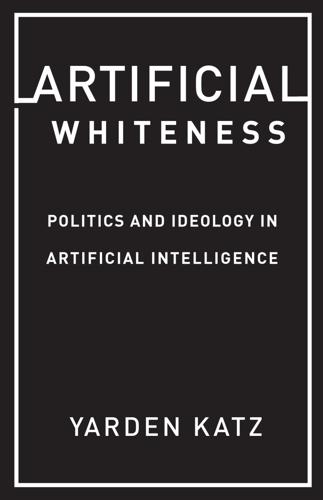
Artificial Whiteness
by
Yarden Katz
Recent discussions of these issues are typically framed around Buolamwini’s claim that “AI-based” facial recognition used by these companies is racially biased. 66. Amitai Ziv, “This Israeli Face-Recognition Startup Is Secretly Tracking Palestinians,” Haaretz, July 15, 2019. 67. Nabil Hassein, “Against Black Inclusion in Facial Recognition,” Digital Talking Drum, August 15, 2017. Regarding Buolamwini’s call for “inclusion,” Ruha Benjamin similarly notes: “While inclusion and accuracy are worthy goals in the abstract, given the encoding of long-standing racism in discriminatory design, what does it mean to be included and hence more accurately identifiable, in an unjust set of social relations?
…
PROSPECTOR—A Computer Based Consultation System for Mineral Exploration. Technical Note No. 155. Menlo Park, Calif.: SRI International, October, 1977. Harwell, Drew. “Defense Department Pledges Billions Toward Artificial Intelligence Research.” Washington Post, September 7, 2018. Hassein, Nabil. “Against Black Inclusion in Facial Recognition.” Digital Talking Drum, August 15, 2017. Hayek, Friedrich A. The Fatal Conceit: The Errors of Socialism. Collected Works of F. A. Hayek. Chicago: University of Chicago Press, 1991. Heckerman, David. “Bayesian Networks for Data Mining.” Data Mining and Knowledge Discovery 1, no. 1 (1997): 79–119. Hedberg, Sara Reese.
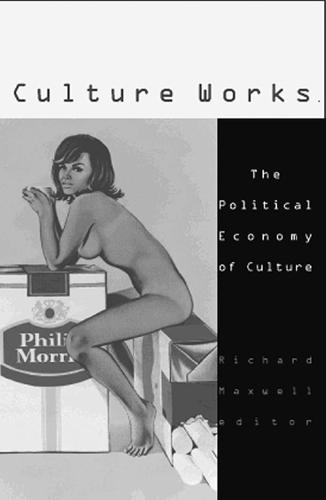
Culture works: the political economy of culture
by
Richard Maxwell
Published 15 Jan 2001
There is not enough room in your typical studio to dance around, not to mention the feedback problem that ensues as cables cross during performance. Within the African Diaspora tradition, drums are already recording instruments meant for outdoors playback. The rhythms we have inherited come from tonal, oral languages whose culture is archived within the beat. The talking drum and the phrase “drum talk,” at one point in the United States were literal statements. The body of the player is to be evident, readily discernible by the timbre, length of the strokes, and intervals. The performer’s 121 Anna Beatrice Scott culture and history are also evident—you can tell who his teacher was, or what language she speaks.
…
See also Marketing Sussman, Gerald, 3, 9, 20 Sweatshops, 2, 176, 190 Sydney, 18, 154 United Kingdom, 50, 142. See also England U.S. Census Bureau, 73 U.S. Information Agency (USIA), 27–28, 35–36, 40, 44; sponsor of 1964 Venice Biennale, 49 U.S. State Department, 27–28, 235; Division of Cultural Relations, 27 U.S. Supreme Court, 101, 236; “Feist” decision, 236 USA Today, 139 Taiwan, 125 Talking drum, 121–22 Tax cuts: corporate welfare, 171–72 Tax evasion: corporate, 171, 176 Technology, 2, 9, 13, 19, 89, 121, 123–24, 134, 199–208, 226, 234–43 Television, 10, 35–36, 41, 68, 74–78, 99–100, 107, 117–20, 132, 136–55, 163–64, 172, 183, 190, 204, 210, 212, 227, 245; development of, 229–33; licensing costs of sports on, 138 Thailand, 175 Theme parks, 68–69, 182, 233 Time-Life, 229, 233 Time Warner, 136, 140, 145, 205, 207, 233.
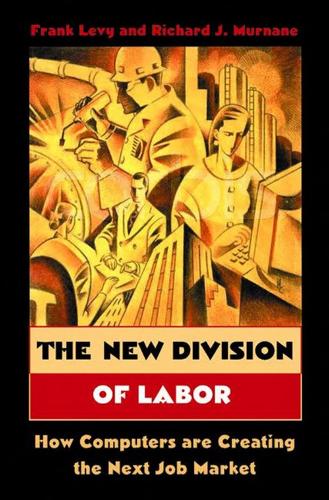
The New Division of Labor: How Computers Are Creating the Next Job Market
by
Frank Levy
and
Richard J. Murnane
Published 11 Apr 2004
A quarterly earnings estimate, the expression on a customer’s face, the tone of a boss’ voice— we perceive and process all of this information in the course of daily WHY PEOPLE STILL MATTER 15 work. In a general sense, we have been information workers since the dawn of civilization. Because information and work are inseparable, any technology that changes how we use information has the potential to reorganize how work is done. Early information technologies—talking drums, the telegraph, and telephone—increased the speed at which information could be transmitted, and, in some cases, the gains were remarkable. Just before the advent of the telegraph, sending a one-page message from New York to Chicago took ten days. By 1850, the telegraph had reduced that time to five minutes and had reduced the cost by a factor of 100.
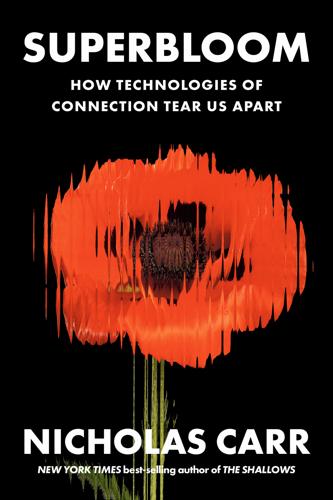
Superbloom: How Technologies of Connection Tear Us Apart
by
Nicholas Carr
Published 28 Jan 2025
In the centuries after the invention of writing, there had been many attempts to speed up the transmission of information, most involving the use of auditory or visual signals in place of physical documents.16 The ancient Greeks constructed a system of lookout towers and fire beacons to send bulletins across their empire. West Africans communicated through talking drums, using subtle alterations in the tone and rhythm of beats to transmit messages. In the late eighteenth century, the French started sending communiqués through an elaborate “optical telegraph” involving watchtowers, telescopes, and mechanical semaphores. Others exchanged messages with smoke signals, flags and pennants, mirrors, cannon blasts and gunshots.

Lonely Planet Jamaica
by
Lonely Planet
The village was founded in 1739 following the signing of a peace treaty granting the Maroons – rebel former slaves – their independence. Moore Town is still run semi-autonomously by a council of 24 elected members headed by a ‘colonel.’ The locals attempt to keep alive their lore and legends, and still bring out their abengs (goat horns) and talking drums on occasion, but many of the youth are emigrating to the cities. Visitors expressing interest in the fascinating history of the Windward Maroons will be warmly welcomed. On arrival, it’s considered polite to pay respects to the local colonel (Wallace Sterling during research; just ask about and someone will take you to him).
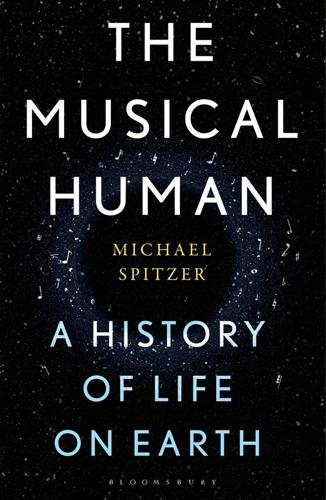
The Musical Human: A History of Life on Earth
by
Michael Spitzer
Published 31 Mar 2021
The slave Kunta Kinte, from Alex Haley’s novel Roots, was abducted from the Muslim Gambia. By these lights, jazz improvisation is indebted to the tradition of Islamic vocal improvisation in North Africa. Another reason, it is said, is that North Americans banned drums in order to stop slaves in plantations communicating with each other with ‘talking drums’. The same theory explains that the music of South America is rich in polymetres and marimbas because most of their slaves originated south of West Africa. The folk music of Colombia, for example, contains many African features: two-part song forms from the Congo, drum languages from the Kwa, Pygmy yodelling, and, more generally, collective participation and a thick layering of rhythms over a repeated pattern.66 These patterns, or ‘timelines’, stood out in bright drum timbres against the profuse rhythms like metronomes.